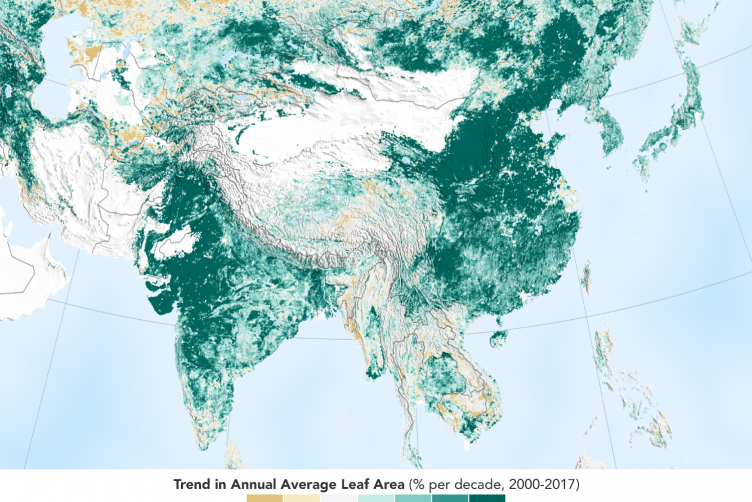Human activities on Earth generally have negative outcomes on the environment – we're pouring plastic into the oceans and melting the ice caps at alarming rates. But it's not all bad news. A new study of satellite data has shown that the Earth has gotten "greener" in the last 20 years or so, with the biggest contributors being China and India. Before we celebrate though, there are a few caveats to consider.
For the new study, researchers from Boston University examined remote sensing data gathered by NASA satellites between the years 2000 and 2017. Interestingly, the total amount of leafy green areas on Earth's land surface has gone up by about five percent in that time. That's about 5.5 million sq km (2.1 million sq mi) – the equivalent of the Amazon worth of new vegetation.
The researchers were surprised by the fact that the two countries leading the charge are China and India. According to the study, China alone is responsible for 25 percent of the global increase in vegetated land.

Given that plants are a huge natural carbon sink, a greener Earth can only be a good thing, right? That's true in theory, but in practice different plants play different roles in the carbon cycle, so the increased greens might not necessarily slow down climate change. New forests are good for carbon capture, but new croplands tend to release any captured carbon back into the atmosphere at harvest time.
The team says that 42 percent of China's new greenery is from forests, and 32 percent is croplands. In India, on the other hand, up to 82 percent of the increased greens is from crops, while just 4.4 percent comes from new forests.
Of course, more cropland means more food production. The researchers say that China and India have increased their production of grains, vegetables and fruits by up to 40 percent since 2000, thanks largely to improved practices like crop rotation, higher usage of fertilizer and irrigation.
The other big surprise of the study was that human activity was responsible for such a large increase in new greenery. Beforehand, the researchers assumed that rising CO2 levels would be the biggest contributing factor. These new findings suggest that human land-use practices need to be included in future Earth systems models.
The research was published in the journal Nature Sustainability.
Source: Boston University





